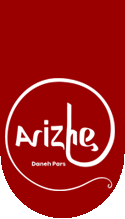Fat Powder
Introduction
Fat powder is one of the supplements commonly used in livestock and poultry diets. Adding this supplement to animal feed enhances the absorption of fat-soluble vitamins. This powder is particularly useful in dairy cattle nutrition. After calving, cows typically lose a significant amount of body weight; adding this supplement helps replenish the lost energy. It is recommended to include a considerable amount of this supplement in the diet of younger cows. Usually, fat powder is used alongside other nutrients such as fiber in the animal’s diet. The inclusion of this supplement in livestock feed increases the nutritional value of the ration.
Characteristics of Fat Powder
Fat powder is an industrial-commercial supplement that is produced and processed in factories. Its color ranges from white to light cream, with a moisture content of about 1%. It contains fatty acids such as oleic, palmitic, and stearic acids. The proportion of these acids may vary depending on the product. Iranian fat powder is generally much cheaper than imported types and is available in granulated or flaked forms, typically packaged in 25-kg bags. The powder also contains a high level of calcium oxide and antioxidants.
Types of Fat Powder
There are different types of fat powder, and their usage depends on the type of cattle. The dosage and form used for dairy cows differ from that for other cattle. Each type of supplement is suitable for specific conditions. Among the various options, the most widely used form is the fat powder designed for dairy cows.
Fat Powder for Livestock
Cattle require large amounts of nutrients to meet their energy needs, and fat powder is one of the key supplements used for this purpose. This supplement is highly beneficial and widely used by farmers. Its primary function is to restore the animal’s energy. In dairy cows, maintaining adequate energy levels is crucial—especially after calving, when energy stores are depleted while milk production is high. Fat powder helps compensate for this energy deficit and stimulates appetite. The energy density of fat powder is about 2.5 times higher than that of grains, making it a highly efficient energy source that rapidly fulfills the animal’s nutritional requirements.

Fat Powder for Poultry
Feed accounts for approximately 70% of total poultry production costs. To optimize profitability, the use of supplements such as fat powder is essential. Adding fat powder to poultry diets can significantly increase farm profitability by improving feed efficiency. Fat supplements raise the birds’ energy levels, enhance heat tolerance, and extend the laying period. However, the optimal inclusion rate depends on the birds’ physiological conditions and environmental factors, and should be carefully adjusted.
Reasons for Using Fat Powder in Livestock and Poultry Feed
Research shows that fat is one of the most important nutrients for the growth and reproduction of dairy cows. The energy provided by fat powder during lactation is substantial. When the feed cannot meet the animal’s energy requirements, a negative energy balance occurs, forcing the cow to draw on its body reserves—leading to weight loss. Fat powder, rich in pure and high-quality fatty acids, provides a concentrated source of energy that efficiently meets the animal’s needs.
Benefits of Fat Powder in Livestock and Poultry Nutrition
Fat powder offers numerous benefits that encourage farmers to use it. Some of its key advantages include:
• Increasing milk yield in dairy cows.
• Raising milk fat content and improving its nutritional composition.
• Enhancing body condition and helping cows recover quickly after calving.
• Improving reproductive performance—an essential factor for farmers.
• Unlike some other supplements, it is not stored in the liver or muscles and is rapidly converted into energy.
• Maintaining energy density when feeding forages without affecting fiber digestibility.
• Reducing heat stress in animals.
Nutritional Value of Fat Powder
The nutritional value of fat powder depends on its fat and protein content. Typical values include:
• Caloric content: 2500–3500 kcal/kg
• Protein content: approximately 30–40%
• Fat content: approximately 90–95%
• Vitamins: contains small amounts of vitamins A and D
• Minerals: contains calcium, phosphorus, potassium, and sodium
Applications of Fat Powder
Fat powder is used in several livestock and poultry feeding systems:
• Broiler production: Used as an ingredient in broiler feed to provide energy and promote rapid growth and weight gain.
• Milk production: Used in dairy feed formulations as an affordable fat source to enhance milk yield and quality.
Storage Conditions
All feed supplements must be stored under proper conditions of light, temperature, and humidity. Improper storage can cause structural changes and spoilage. Fat powder is more sensitive to environmental factors than other supplements such as meat or fish meal, so it must be stored carefully. The expiration date should be checked regularly.
When mixed with other nutrients, the storage requirements may vary slightly, but in general, the powder should be kept in a cool, dry place away from moisture.
Permissible Levels of Fat Powder in Livestock and Poultry Feed
The dosage of fat powder is critical and should be carefully controlled. Overuse can have adverse effects and may even cause toxicity. The recommended inclusion rate for livestock and poultry is around 5%, though this may vary based on fat content and animal needs. Because fat powder increases vitamin requirements, supplementation with vitamins—especially A, D, and E—is essential. In general, the safe range for inclusion is 3–7%, and farmers must strictly adhere to these limits to ensure animal health and optimal performance.

